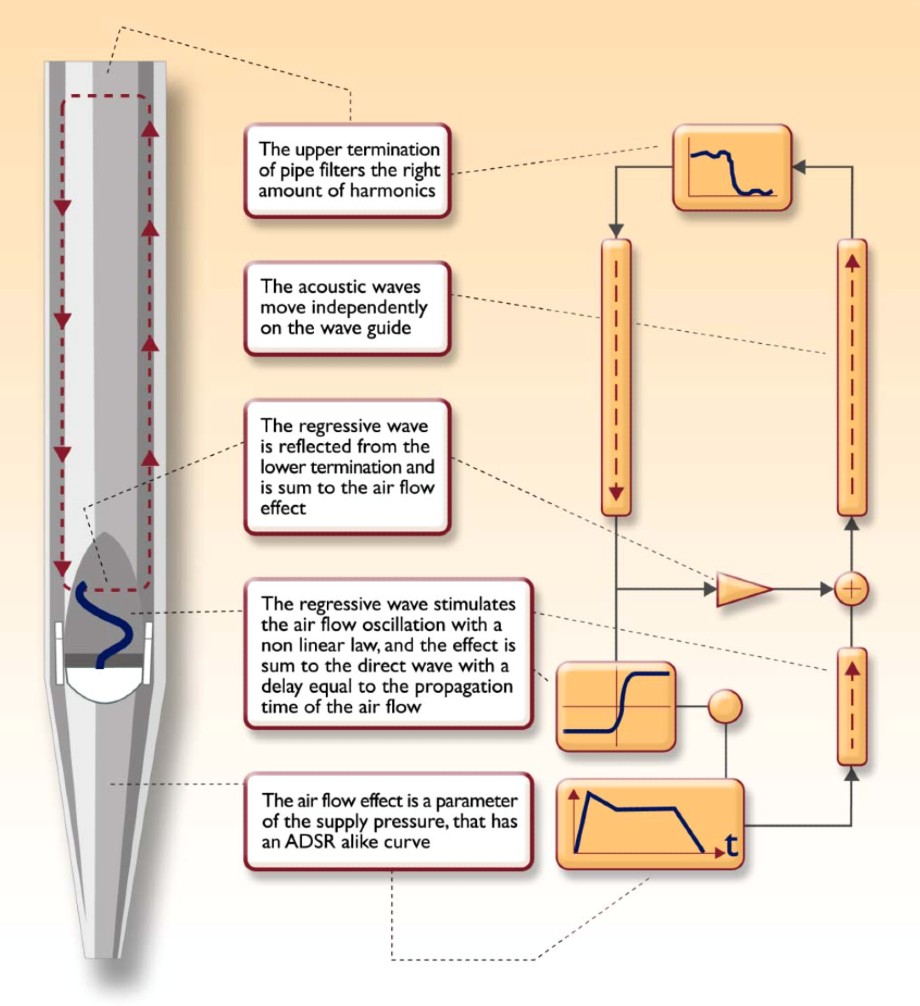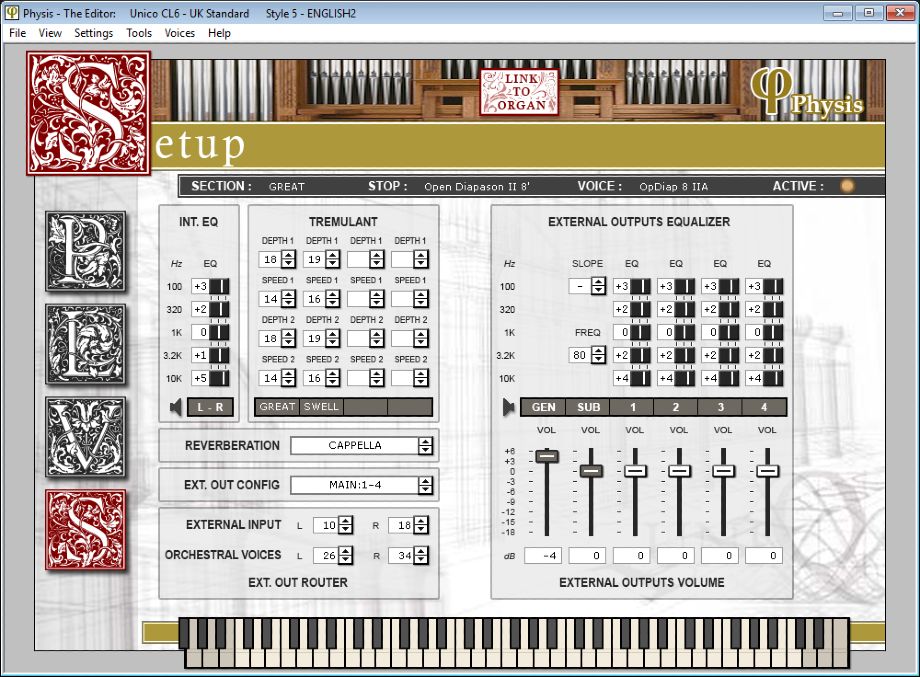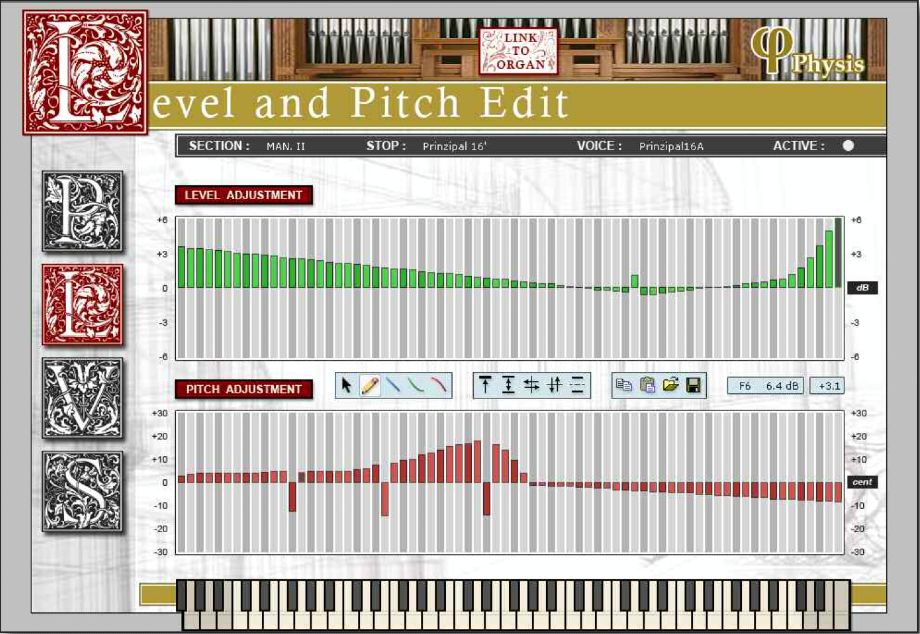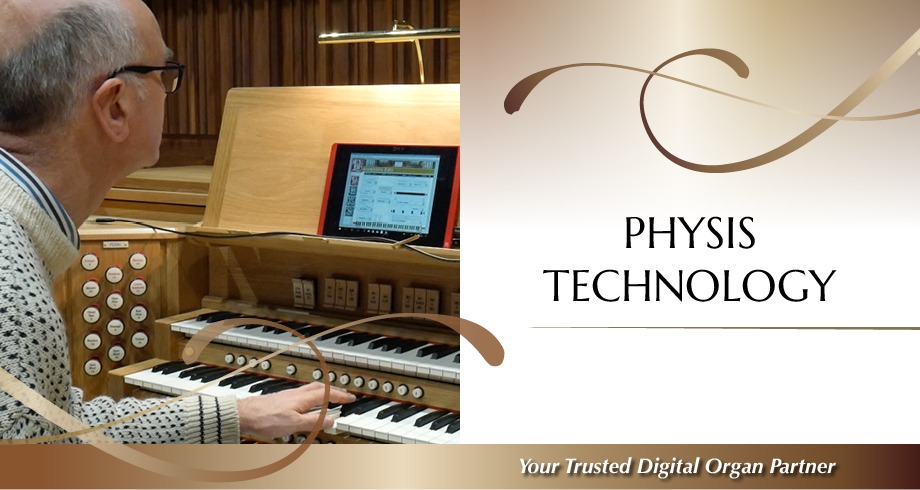Physis is a computer generated physical model of an organ pipe. The model can be manipulated in just the same way as a pipe voicer would approach an organ pipe.
The model defines the pipe bore, mouth size and position, material of manufacture and many other physical characteristics. By manipulation of upwards of 20+ parameters the sound is defined. The same model runs across the entire keyboard compass so there is a smooth transition of sound without any noticeable break points that can sometimes be heard in sampled sound instruments.
Physis Organs Compared to Sampled Sound Organ Technology
With sampled sound organ technology (used in the Chorum range of organs), each note reproduces identically each time it is played. More expensive sampled sound systems will offer a selection of alternative starting transients but this is still from a limited number of alternatives.
The ‘Physis’ system (used in Envoy, Regent and Sonus organs) continually invents the start of the note from scratch. Each time it is played it has its own unique life more closely creating what happens with a real pipe. Also even in a single steady note there is a very subtle inconsistency in what you hear, as the air flow through the pipe always has some element of random motion.
This ‘micro variation’ is a critical feature that the Viscount Physical model reproduces.

Most customers who listen in detail agree these features add a completely new dimension to the sound which greatly enhances the realism. Further as the organ sound is built up by the playing of additional notes and the adding of extra stops, the model subtly changes the ensemble sound just as would occur in a true pipe organ when the available air is delivered to an ever increasing number of pipes.
Because of this the sound has a life that is not nearly so well delivered by sampled sound instruments.

The Versatility of Physis Organs is incredible
A further incredibly versatile feature of the sound processing allows Physis instruments to develop individual sound boards for each of the organs divisions.
In a pipe organ each division (Great, Swell, Choir and Pedal) is set in a different area of the case. In a classic design the Swell organ will be near the top of the instrument, the Great in the centre and the Choir organ is often set behind the player with Pedal divisions set to the extreme sides of the case.
Physis sound routing allows this to be created through the speaker set up. A feature offered by no other digital organ brand.
In addition, each division will have its own sound architecture with the possibility of bass pipes at the centre moving to the trebles at either side, referred to as a cusp layout. Alternatively the trebles can be at the centre with the basses to either side referred to as an inverted cusp layout.
There are many other layouts and Physis technology allows us to faithfully replicate any of these configurations for each of the organs divisions.

Installing, Configuring and Voicing a Physis Organ
Placing our instruments in a church or concert hall setting, the flexible audio routing allows us to build a sound stage of speakers, that will faithfully place the sound source of each individual note at the point in the speaker array, where it would be if it came from an individual pipe (in a pipe organ).
These factors combine to allow us to build organs of remarkable realism and create a sound that is exceptionally pleasing, lively and authentic.
We have created a video series, consisting of 12 videos, explaining how to configure, voice and customise Viscount’s Physis-based organs. You can view these videos called ‘Physis Explained’ below.
Alternatively, go directly to Vimeo, YouTube or watch the video series in our blog called “Understanding your Envoy, Regent and Sonus organ features“, where we discuss the features in more depth.
And it just got better with the arrival in 2024 of Physis Plus
Some 12 years after Physis was launched our colleagues in Italy have added exciting new features to the sound generation and audio.
All Physis Plus instruments now have two bass channels adding significantly to the underpin of the 8 ft tones. A much more sophisticated reverberation solution allows the musician to determine where in the space relative to the sound source they are seated managing separately the early and late sound reflections.
The sound models now include more detail, particularly the aeolian tones that contribute extensively to the starting speech of a pipe making the sound even more interesting. The consoles also have been refreshed with improved pistons and new-style rocker tabs.
More resources and further reading
Are you looking to purchase a digital organ? Then we suggest you read our article called “Ten tips for buying a digital organ“.
If you are researching a new organ for your church, cathedral or school then we suggest looking at the blog “Choosing the right organ for your church“.
Looking for a home practice organ instead? Find out more in this blog – “Home Practice Organs: Has a luxury become a necessity?“.



